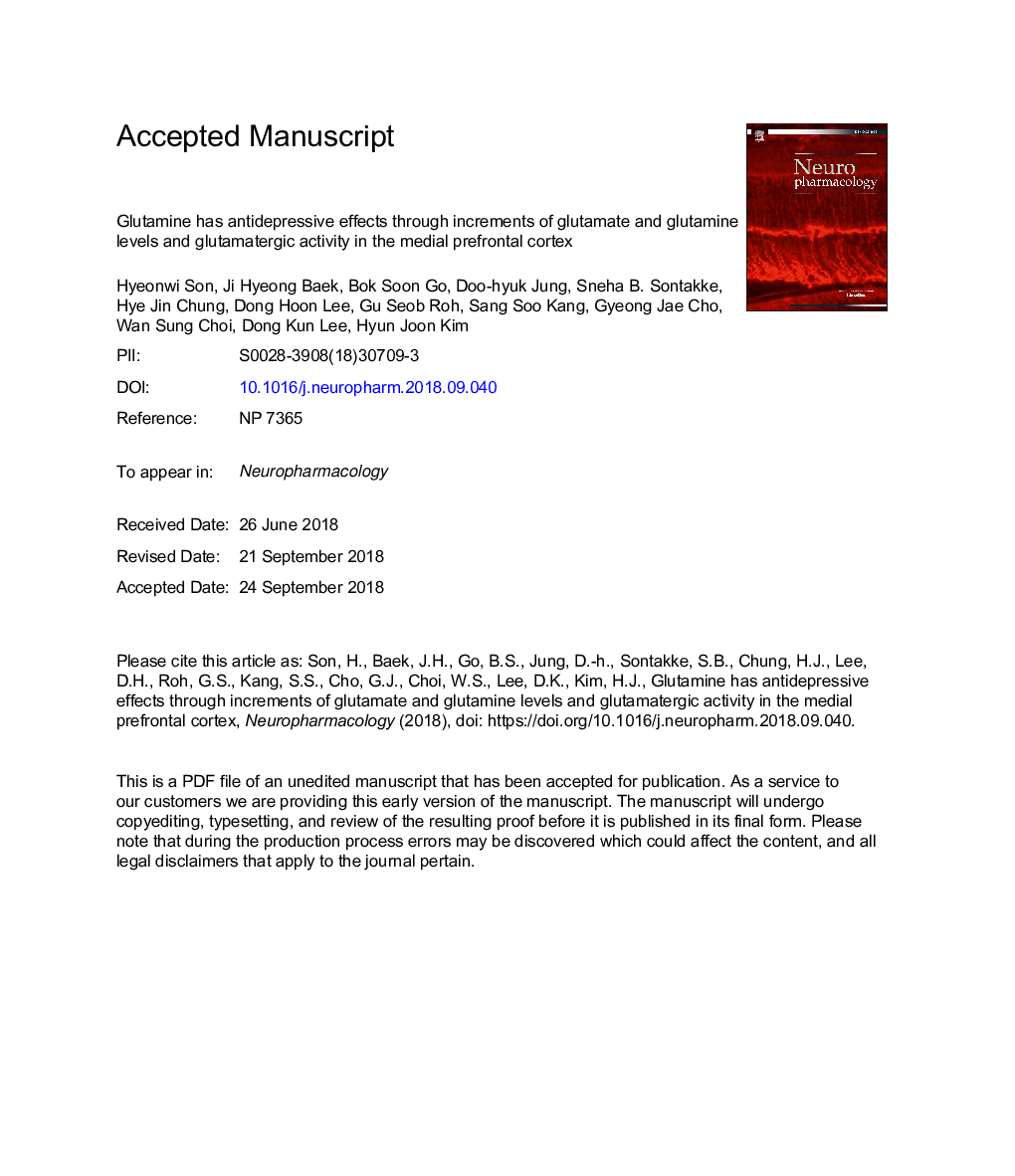| Article ID | Journal | Published Year | Pages | File Type |
|---|---|---|---|---|
| 11025763 | Neuropharmacology | 2018 | 48 Pages |
Abstract
Emerging evidence has shown the low levels of glutamate (Glu) and glutamine (Gln) and the hypoactivity in the cortex of patients with depression. The hypoactivity is closely related with low frequency of glutamatergic signaling that is affected by the levels of Glu and Gln. Thus, we hypothesized that there might be a causality among low levels of Glu and Gln, hypoactive glutamatergic neurotransmissions, and depressive behaviors. Here, we found low Glu and Gln levels and low frequency of spontaneous excitatory postsynaptic current (sEPSC) of glutamatergic neurons in the medial prefrontal cortex (mPFC) of chronic immobilization stress (CIS)-induced depressed mice. The depressed mice also showed hypoactive Gln synthetase (GS). Inhibition of GS by methionine sulfoximine (MSO) decreased Glu and Gln levels and increased depressive behaviors with low frequency of sEPSC in the mPFC, indicating that Glu and Gln decrements cause hypoactive glutamatergic neurotransmissions and depressive behaviors. Both Glu and Gln could increase sEPSC of glutamatergic neurons in the mPFC on slice patch, but only Gln overcame MSO to increase sEPSC, suggesting that exogenous Gln would recover CIS-induced low frequency of sEPSC caused by hypoactive GS and act as an antidepressant. Expectedly, Gln supplementation showed antidepressant effects against CIS; it increased glutamatergic neurotransmissions with Glu and Gln increment in the mPFC and attenuated depressive behaviors. Moreover, selective glutamatergic activation in the mPFC by optogenetics decreased depressive behavior. In conclusion, depressive behaviors evoked by chronic stress were due to hypoactive glutamatergic neurons in the mPFC caused by low levels of Glu and Gln, and exogenous Gln can be used as an alternative antidepressant to increase glutamatergic neurotransmission.
Keywords
Related Topics
Life Sciences
Neuroscience
Behavioral Neuroscience
Authors
Hyeonwi Son, Ji Hyeong Baek, Bok Soon Go, Doo-hyuk Jung, Sneha B. Sontakke, Hye Jin Chung, Dong Hoon Lee, Gu Seob Roh, Sang Soo Kang, Gyeong Jae Cho, Wan Sung Choi, Dong Kun Lee, Hyun Joon Kim,
